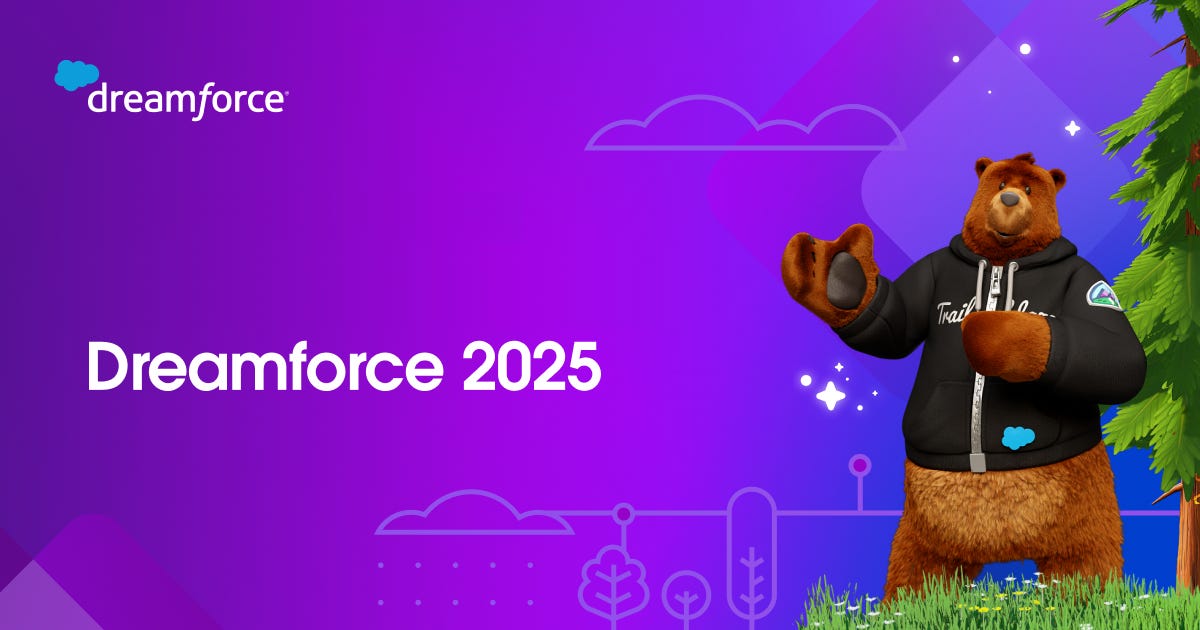One year after introducing Agentforce and executing a remarkable pivot, Dreamforce offered the perfect opportunity to take stock of Salesforce’s progress on the Agentic AI front. The event also revealed how deeply AI is shaping its SaaS business and growth trajectory.
Here are my nine takeaways.
Agentforce 360 - Salesforce unveiled the fourth major iteration of its Agentforce platform, now renamed Agentforce 360. Agentforce 2 introduced the Testing Center to validate agents for greater reliability and accuracy. Agentforce 3 added the Command Center to provide visibility and observability, enabling real-time monitoring and optimization. This fourth release adds Agentforce Script, enabling deterministic agent behavior by combining structured instructions with LLM reasoning. It also improves handling of complex documents through advanced context indexing and deeper integration with Data 360. Salesforce’s rapid iterations underscore a clear reality: deploying, monitoring, and optimizing AI agents remains a complex undertaking.
Traction and Scale - Interest in Agentforce is undeniable: 12,000 customers are currently experimenting with the platform, with 13,000 implementations underway. The key question is how much of this will convert into paid, production deployments. Salesforce expects paying Agentforce and Data Cloud customers to double to 10,000 by year-end, up from 5,000 at the start of the year. Agentforce alone contributed $440M of the $1.2B Data 360 and AI ARR achieved in Q2 FY26.
Adoption Model - Salesforce is reshaping its customer success model around Forward Deployed Engineers (FDEs), a model pioneered by Palantir. It plans to deploy 1,000 FDEs by year-end and expand capacity through partners. The move reflects Salesforce’s conviction that hands-on engineering engagement is critical to Agentforce and AI adoption.
Pricing Evolution - Salesforce took stock of the evolution of Agentforce pricing introduced over the past twelve months. It expanded the per-conversation model with flexible credits applicable across multiple consumption metrics. In Q2, it added a per-seat option offering unlimited, unmetered access to Agentforce for Cloud users. It also launched a hyperscaler-style framework, enabling customers to buy discounted credits through pre-committed usage, and introduced flex agreements to convert seat-based licenses into consumption. Most recently, in July, Salesforce rolled out an Agentic Enterprise License Agreement—a flat-fee model granting unlimited access to both Data Cloud and Agentforce.
Agent Orchestration - Salesforce introduced MuleSoft Agent Fabric, a new framework for Agent orchestration. It combines agent and tool cataloging for discovery, a robust trust and security layer, and the MuleSoft Agent Visualizer for full observability, addressing the challenges of managing AI agents at scale.
Voice AI - Salesforce unveiled Agentforce Voice, enabling the creation of Voice AI agents powered by its Tenyx acquisition from last year, extending AI capabilities into natural, conversational voice interactions.
IT Service Management (ITSM) - Salesforce introduced Agentforce IT Service to enter the ITSM market, a move that felt somewhat in response to ServiceNow’s expansion into CRM. Expanding into new, large markets remains essential to sustaining its growth trajectory.
Slack at the forefront - Salesforce is making a major push to position Slack as the universal client for its suite of applications. Slack now gives employees who are not Salesforce Cloud users access to apps and the ability to search across all enterprise data and knowledge assets. The platform emphasizes conversational experiences, offering an alternative to complex scrolling and navigation using Lightning. For example, Slack channels provide direct access to and monitoring of Salesforce objects.
The next frontier - Salesforce set a bold long-term revenue target of $60B (ex-Informatica) by FY30, reflecting a 10% organic CAGR. While a reset from its 2022 plan, it remains an ambitious and assertive growth goal.
Salesforce is clearly doubling down on its AI-driven transformation. Despite headwinds, the enterprise application juggernaut is demonstrating remarkable agility in aggressively seizing its AI opportunity.



